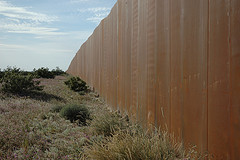I went to News Rewired on Thursday, along with dozens of other journalists and folk concerned in various ways with news production. Some threads that ran through the day for me were discussions of how we publish our data (and allow others to do the same), how we link our stories together with each other and the rest of the web, and how we can help our readers to explore context around our stories.
One session focused heavily on SEO for specialist organisations, but included a few sharp lessons for all news organisations. Frank Gosch spoke about the importance of ensuring your site’s RSS feeds are up to date and allow other people to easily subscribe to and even republish your content. Instead of clinging tight to content, it’s good for your search rankings to let other people spread it around.
James Lowery echoed this theme, suggesting that publishers, like governments, should look at providing and publishing their data in re-usable, open formats like XML. It’s easy for data journalists to get hung up on how local councils, for instance, are publishing their data in PDFs, but to miss how our own news organisations are putting out our stories, visualisations and even datasets in formats that limit or even prevent re-use and mashup.
Following on from that, in the session on linked data and the semantic web, Martin Belam spoke about the Guardian’s API, which can be queried to return stories on particular subjects and which is starting to use unique identifiers – MusicBrainz IDs and ISBNs, for instance – to allow lists of stories to be pulled out not simply by text string but using a meaningful identification system. He added that publishers have to licence content in a meaningful way, so that it can be reused widely without running into legal issues.
Silver Oliver said that semantically tagged data, linked data, creates opportunities for pulling in contextual information for our stories from all sorts of other sources. And conversely, if we semantically tag our stories and make it possible for other people to re-use them, we’ll start to see our content popping up in unexpected ways and places.
And in the long term, he suggested, we’ll start to see people following stories completely independently of platform, medium or brand. Tracking a linked data tag (if that’s the right word) and following what’s new, what’s interesting, and what will work on whatever device I happen to have in my hand right now and whatever connection I’m currently on – images, video, audio, text, interactives; wifi, 3G, EDGE, offline. Regardless of who made it.
And this is part of the ongoing move towards creating a web that understands not only objects but also relationships, a world of meaningful nouns and verbs rather than text strings and many-to-many tables. It’s impossible to predict what will come from these developments, but – as an example – it’s not hard to imagine being able to take a photo of a front page on a newsstand and use it to search online for the story it refers to. And the results of that search might have nothing to do with the newspaper brand.
That’s the down side to all this. News consumption – already massively decentralised thanks to the social web – is likely to drift even further away from the cosy silos of news brands (with the honourable exception of paywalled gardens, perhaps). What can individual journalists and news organisations offer that the cloud can’t?
One exciting answer lies in the last session of the day, which looked at journalism and games. I wrote some time ago about ways news organisations were harnessing games, and could do in the future – and the opportunities are now starting to take shape. With constant calls for news organisations to add context to stories, it’s easy to miss the possibility that – as Philip Trippenbach said at News Rewired – you can’t explain a system with a story:
Stories can be a great way of transmitting understanding about things that have happened. The trouble is that they are actually a very bad way of transmitting understanding about how things work.
Many of the issues we cover – climate change, government cuts, the deficit – at macro level are systems that could be interestingly and interactively explored with games. (Like this climate change game here, for instance.) Other stories can be articulated and broadened through games in a way that allows for real empathy between the reader/player and the subject because they are experiential rather than intellectual. (Like Escape from Woomera.)
Games allow players to explore systems, scenarios and entire universes in detail, prodding their limits and discovering their flaws and hidden logic. They can be intriguing, tricky, challenging, educational, complex like the best stories can be, but they’re also fun to experience, unlike so much news content that has a tendency to feel like work.
(By the by, this is true not just of computer and console games but also of live, tabletop, board and social games of all sorts – there are rich veins of community journalism that could be developed in these areas too, as the Rochester Democrat and Chronicle is hoping to prove for a second time.)
So the big things to take away from News Rewired, for me?
- The systems within which we do journalism are changing, and the semantic web will most likely bring another seismic change in news consumption and production.
- It’s going to be increasingly important for us to produce content that both takes advantage of these new technologies and allows others to use these technologies to take advantage of it.
- And by tapping into the interactive possibilities of the internet through games, we can help our readers explore complex systems that don’t lend themselves to simple stories.
Oh, and some very decent whisky.
Cross-posted at Online Journalism Blog.
